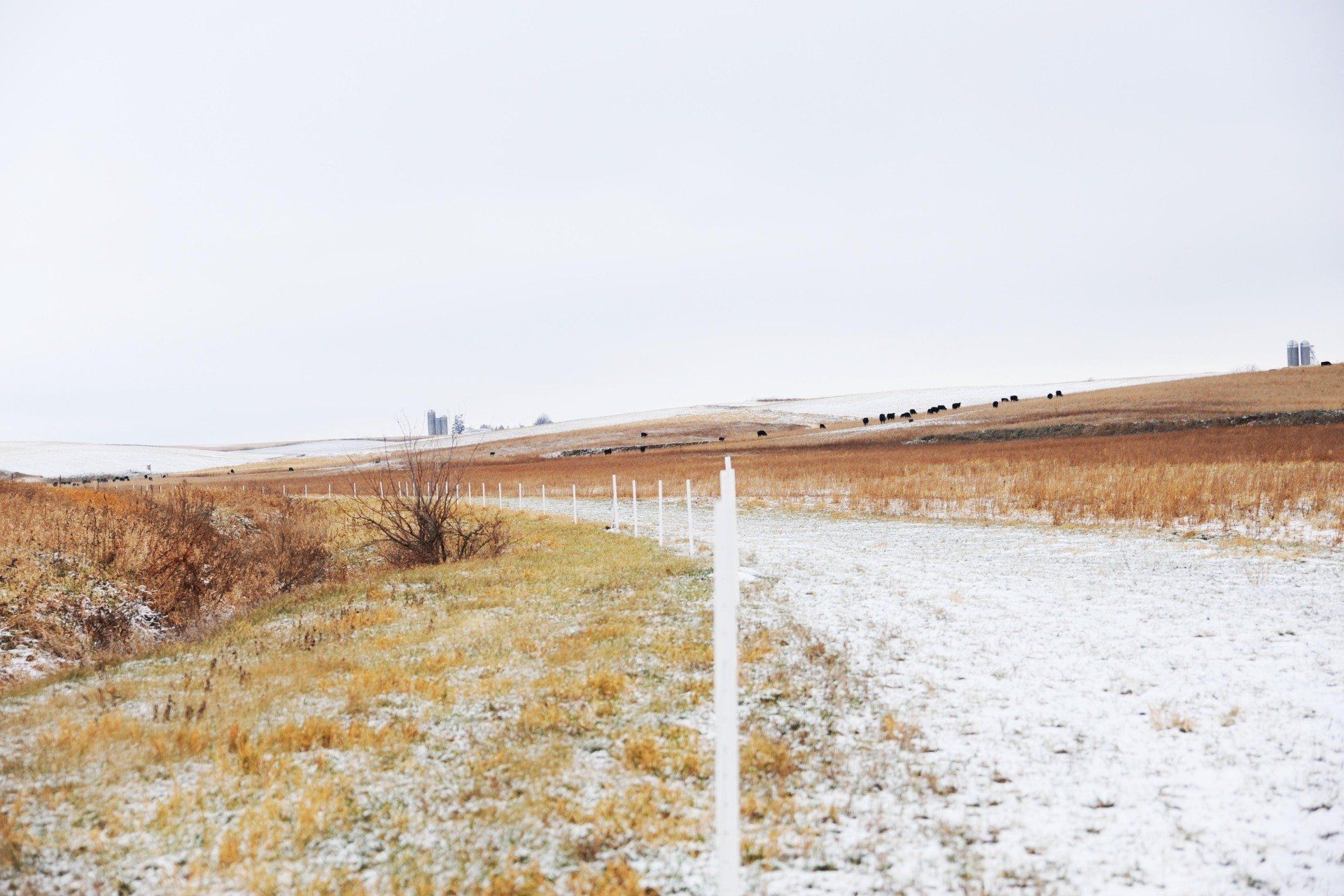
Conservation
Benefits
Learn more about each step in the Investment/Reward
Ladder of Conservation Practices
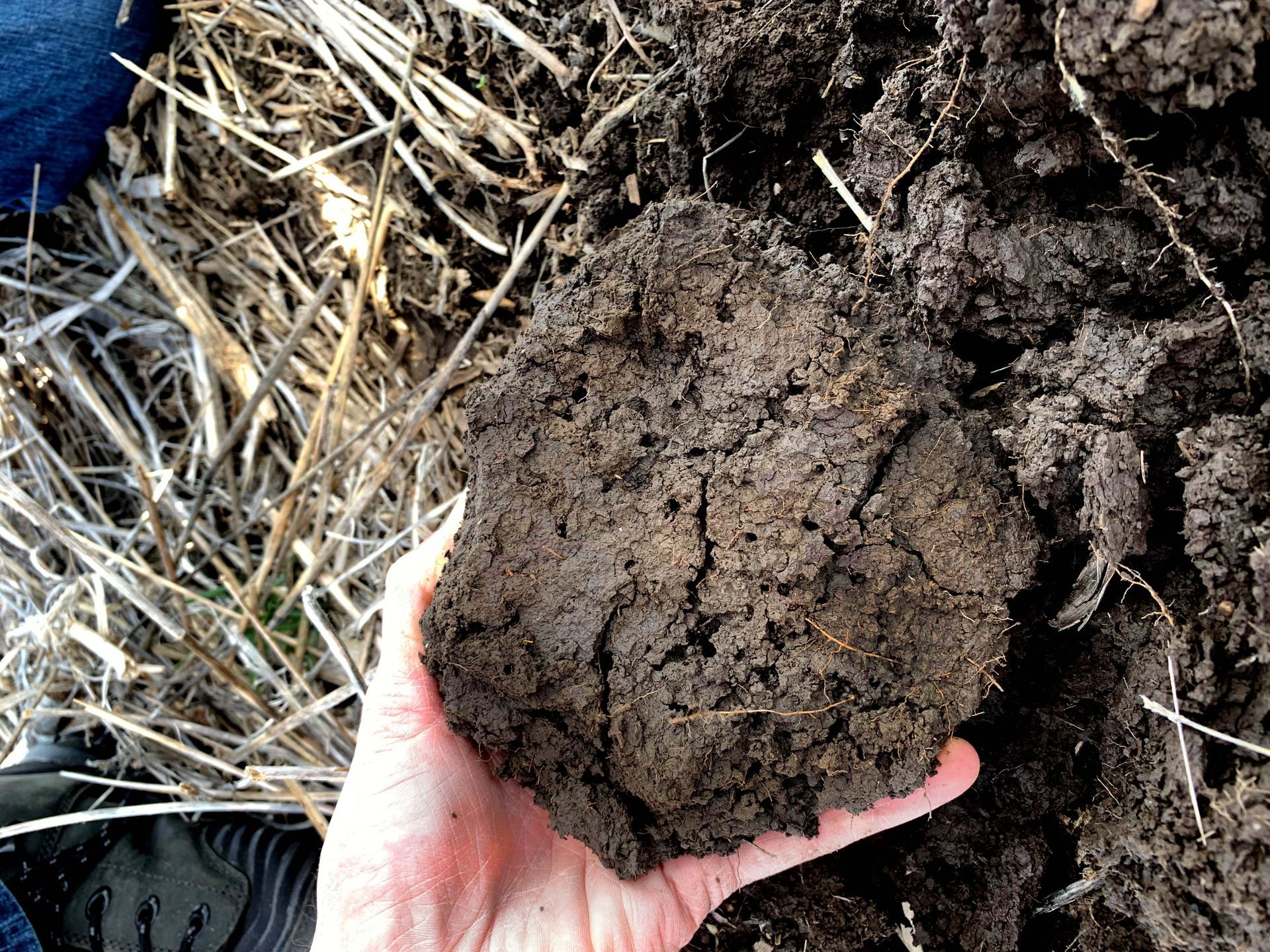
1 Improved Nutrient
Management
Often overlooked as a conservation practice, careful nutrient management practices reduce nitrate and phosphorus losses to waterways and ensure availability of those nutrients to your crops when they need it the most. Practices such as variable rate application, spring or in-season application, N-stabilizers, and even some biologicals can all reduce potential nutrient loss and help save those nutrients for their intended purpose: producing the healthiest crop possible. Improved nutrient management practices are the most accessible conservation farming practices for everyone.
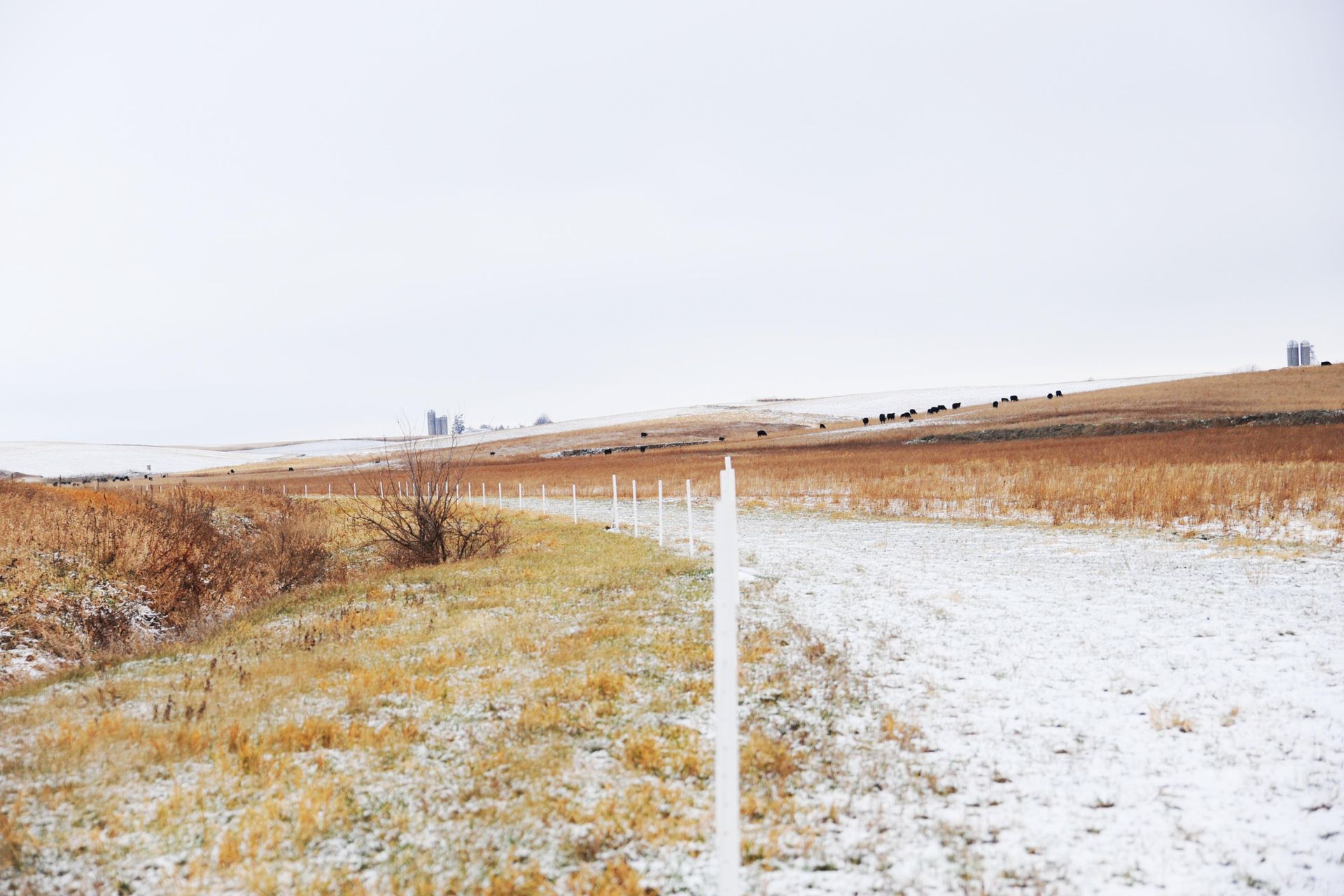
2 Improved Manure
Management
Similar to conserving and carefully managing synthetic nutrients, how you calculate and manage your manure applications can drastically improve the quality of water that moves off your fields, keeping more of those valuable organic nutrients where they are needed the most: in your fields for your cash crops to use!
Using Manure Management Plans, and manure stabilizers, are practices that reduce loss of manure and improve downstream water quality.
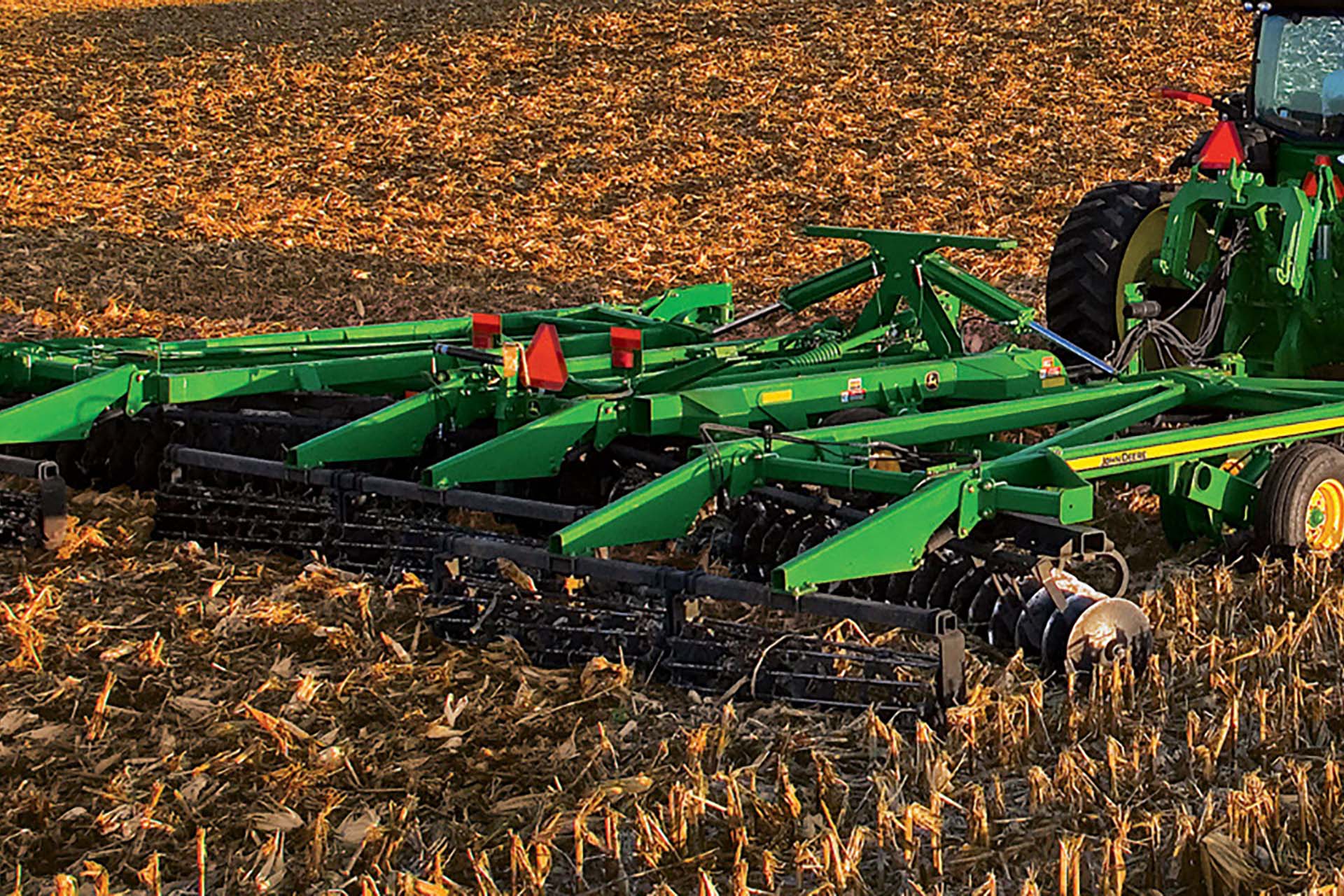
3 Vertical or ConservationTillage
Sometimes referred to as “mulch tillage”, these types of reduced tillage practices leave at least one-third of the plant residue from each growing season on the surface of the soil after shallow incorporation of the rest. Leaving surface residue slows or prevents water and wind-related soil erosion, which directly improves our water quality and keeps our most valuable asset where it belongs: in our fields! There are a variety of implements that qualify as conservation tillage such as chisels, disks, or field cultivators. Vertical tillage is a more recent and popular practice that can leave up to 70 percent of the surface plant residue undisturbed.
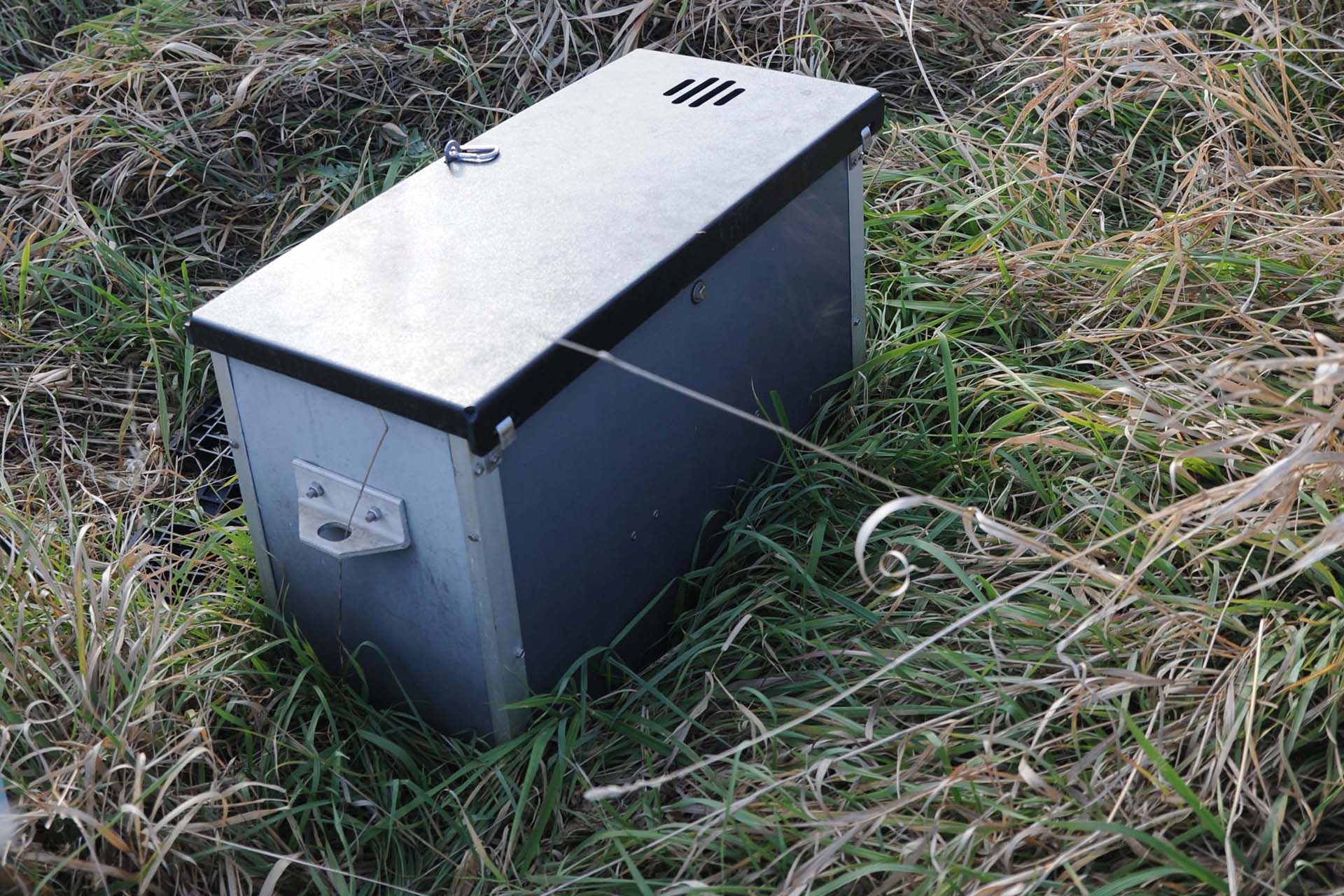
4 Saturated Buffers and
Bioreactors
Also known as “edge of field’ structures, bioreactors and saturated buffers are specialized drainage management structures that are typically installed on the edge of fields, usually in connection with existing buffer or filter strips. Connected to tile outlets, these structures act as a filtration system for a field’s tile drainage system, predominately removing nitrates before they enter the waterways. Saturated buffers and bioreactors are part of a systems-approach to overall nutrient capture where in-field practices like cover crops, no-till, and nutrient management are combined with edge-of-field structures to significantly reduce nutrient runoff. However, for landowners or farmers who don’t want to use in-field practices, saturated buffers and bioreactors are options to capture nitrates at the edge of the fields before they are lost to downstream waterways. Where appropriate, edge of field structures are also attractive alternatives to wetlands, in that they usually don’t take additional acreage out of production.

5 Cover Crops
Cover crops are one of the most popular conservation farming practices in the Midwest. These are crops that are planted in the fall to provide protective cover for the soil and to take in excess nutrients over the winter and into spring. Cover crops hold nutrients and soil in place until Spring, when they are terminated and allowed to decompose. Cover crops provide numerous soil health benefits including: increasing water infiltration, porosity, tilth, organic matter, and soil microorganisms. There are multiple species of cover crops for every agronomic purpose and our team can help you decide what species to choose based on your management plans.
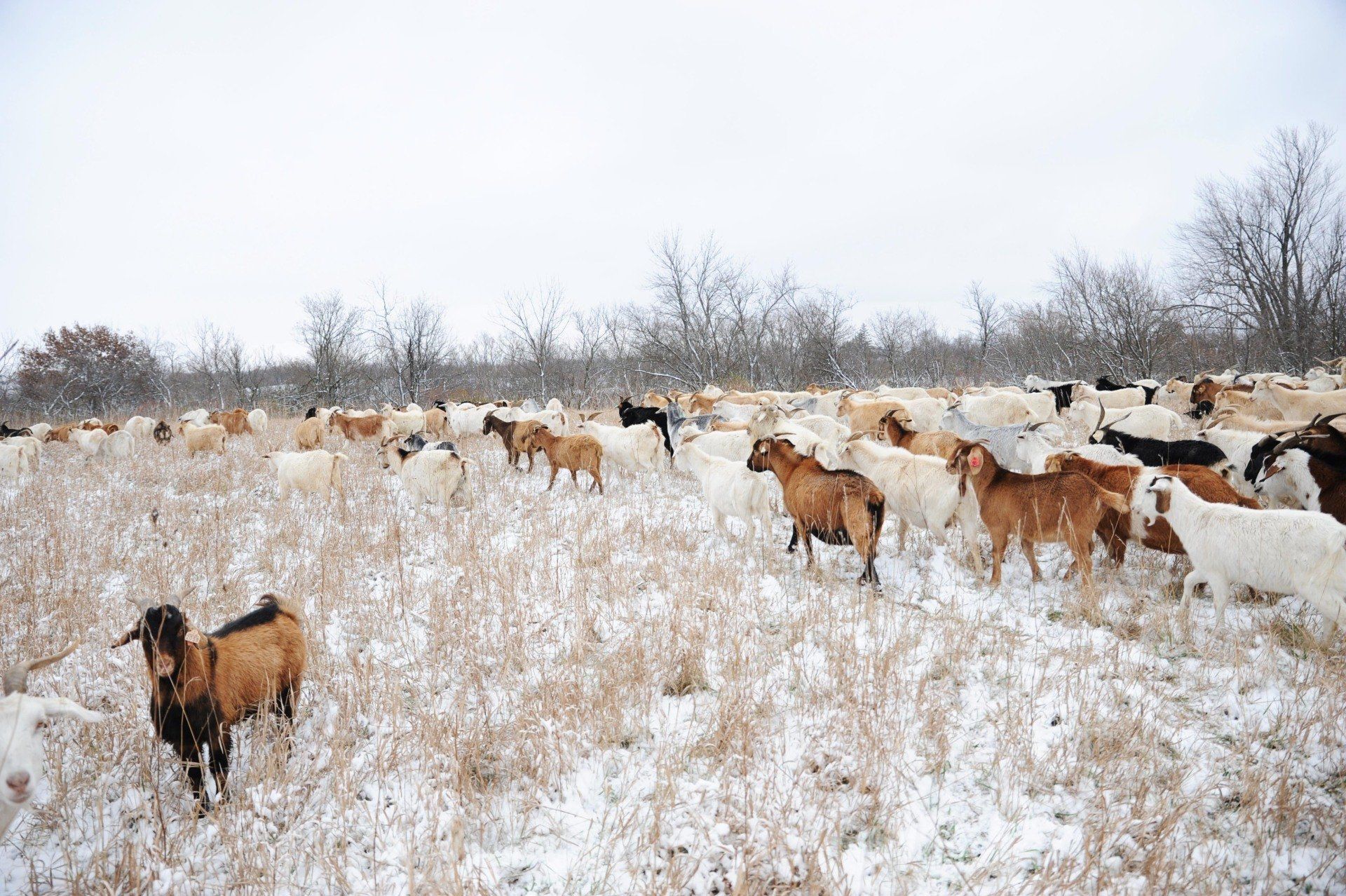
6 Diversifying Crop Rotation
Crop rotation can contribute to conservation goals by adding one or more crops into the rotation and covering the soil for longer periods of time during the year. This contributes to improved soil health, reduced soil erosion, and better uptake of residual nutrients that are not used by the main cash crops. Relay cropping, double cropping, and pasture or hay are the most common types of crop diversification in Iowa. Relay cropping typically involves planting soybeans into an over wintering small grain crop that is then harvested a few weeks later. Double cropping typically involves planting soybeans immediately after harvesting an overwintering small grain. While these systems take a few years to master, their payoff can be large and enjoyable for the farmer who wants to grow something more than corn or soybeans.
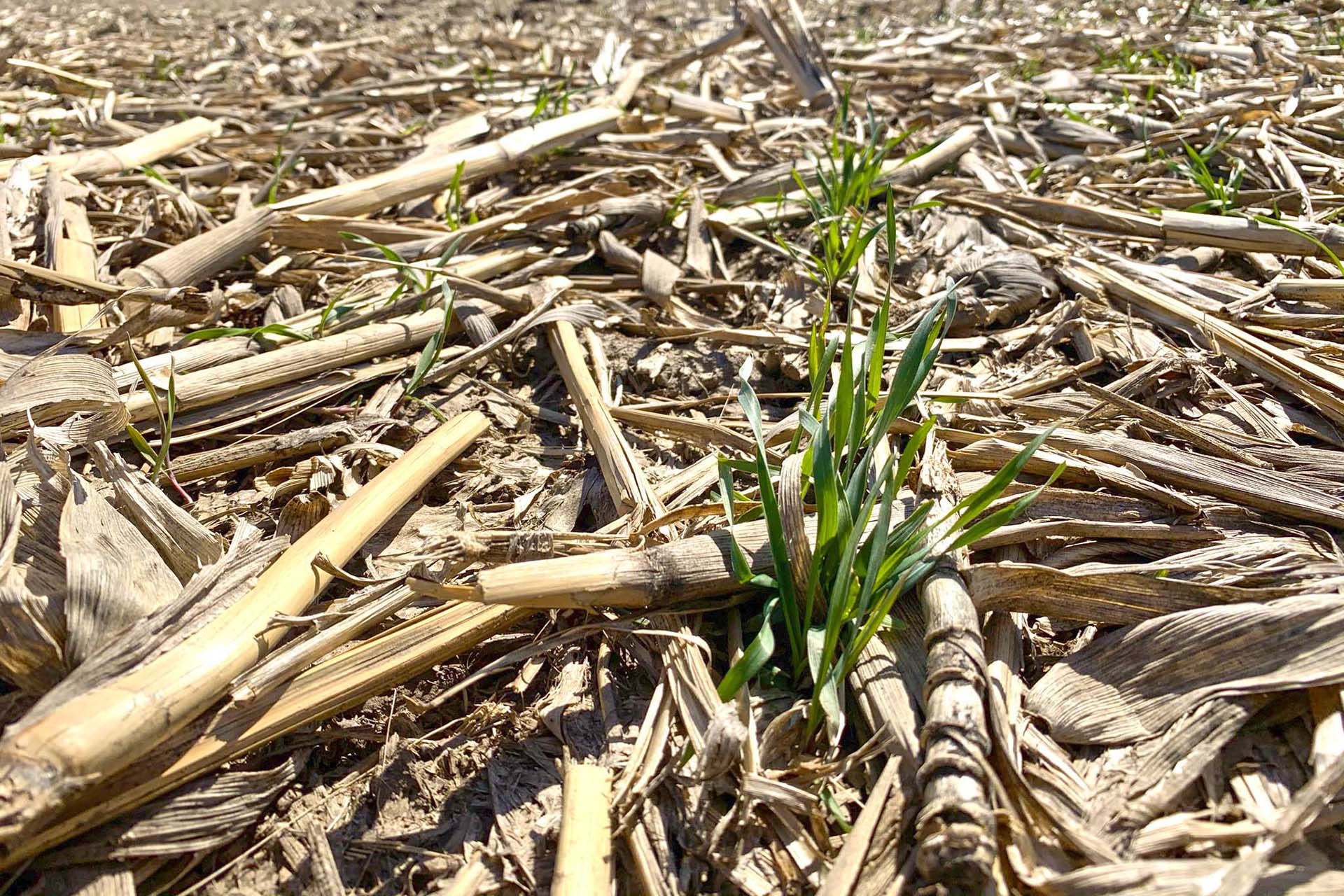
7
No-till and Strip-till
No-till and Strip-till are two types of conservation tillage practices that significantly reduce or eliminate tillage all together. No-till is exactly as it sounds, no tillage whatsoever. With the use of specialized drills and planters, the soil surface is left as undisturbed as possible. Strip till uses a designed implement to create a tilled and fertilized strip for ideal plant growth, while leaving the rest of the soil surface across the field undisturbed. Both systems reduce trips across the field, save money on fuel expenses, reduce or eliminate soil erosion, and improve organic matter percentage over time. No-till is attractive because it also saves on machinery and maintenance costs. Both systems are more reliant on chemical herbicides for weed management and require a more holistic management approach during the transition period away from tillage.
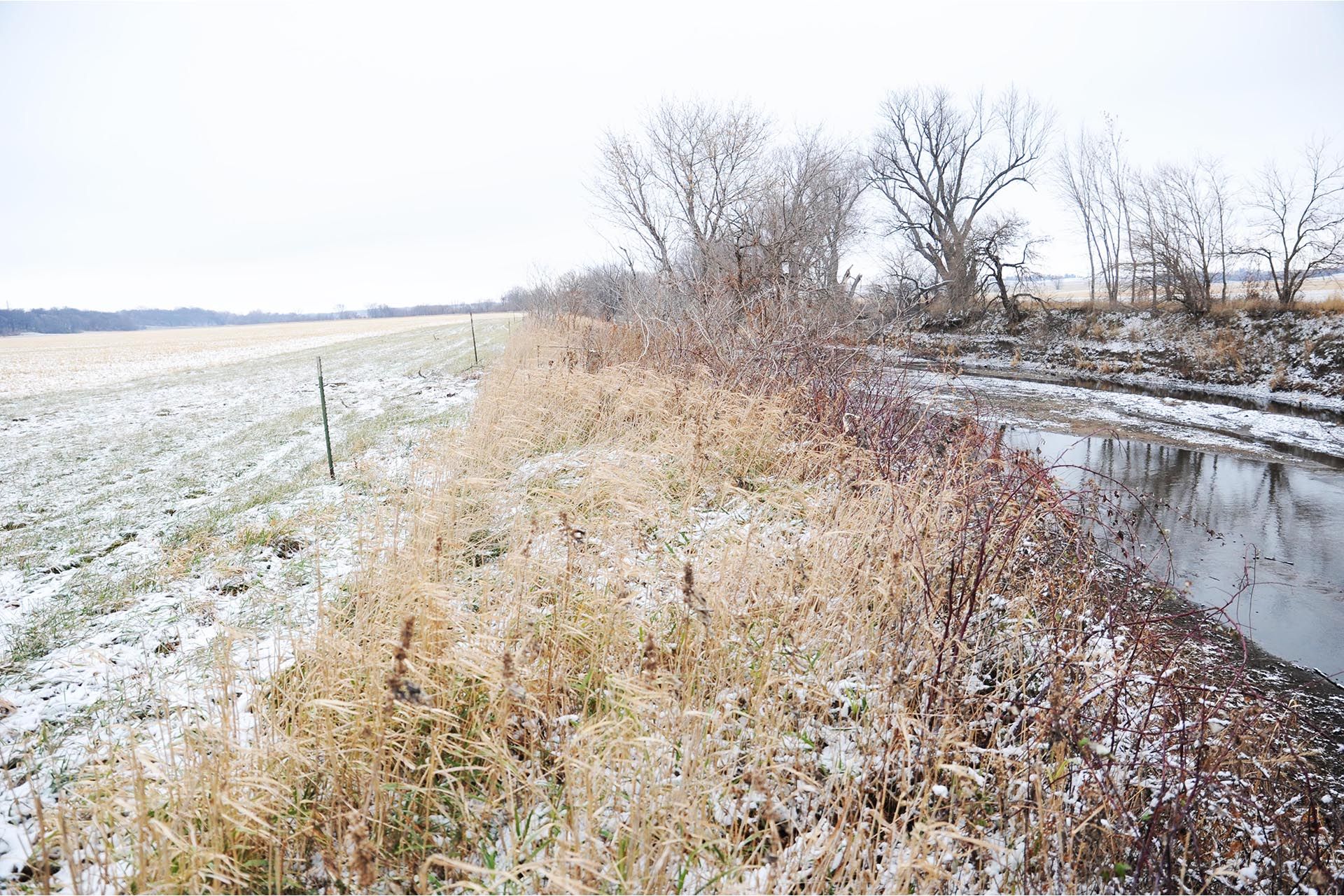
8 Buffer Strips, Waterways, and Filter Strips
Buffer strips, waterways, and filter strips are areas of permanent vegetation that are designed to slow or capture the movement of water off field before it reaches drainage ditches and creeks. These strips can be either introduced species (commonly brome grass) or native species and they are located between creeks or ditches and the neighboring cropland. These practices take acres out of production but provide numerous incredibly important ecosystem services. Perhaps the most valuable benefit is their ability to reduce soil erosion from water movement. They also provide wildlife and pollinator habitat and improve downstream water quality.
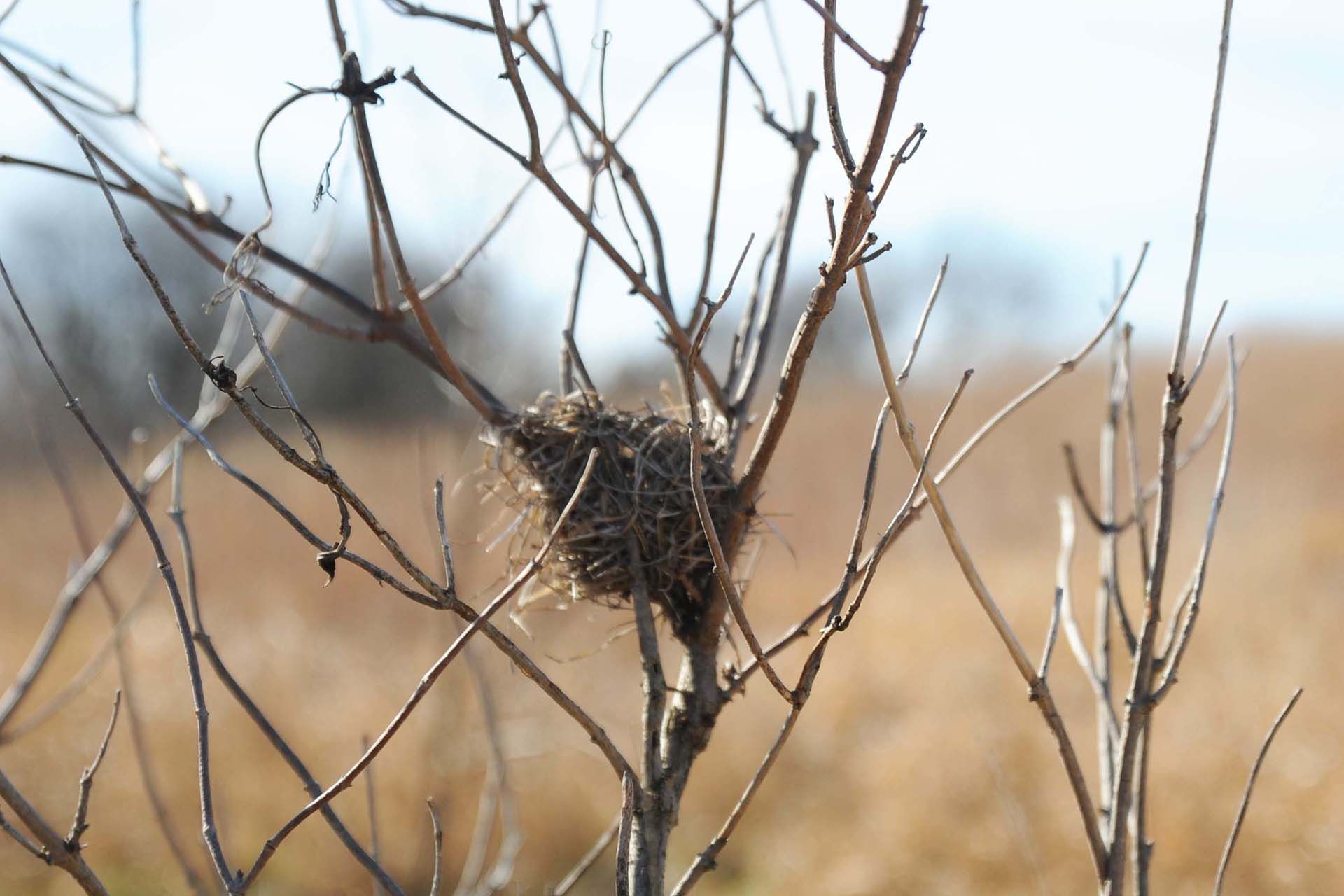
9 CRP or Wildlife Habitat
CRP refers to the Conservation Reserve Program, which is the most common practice to take farmable acres out of production and plant perennial native vegetation. It is commonly used on areas of marginal land due to excessive flooding, steep terrain, or other anti-quality factors that make farming difficult. There are dozens of different CRP programs designed to achieve certain goals, however, all tracts of perennial vegetation that are intentionally planted to focus on certain ecosystem goals are incredibly valuable for wildlife and water quality. These programs can also benefit a farm’s bottom line by raising a field’s overall return on investment when the poorest performing acres are taken out of production.
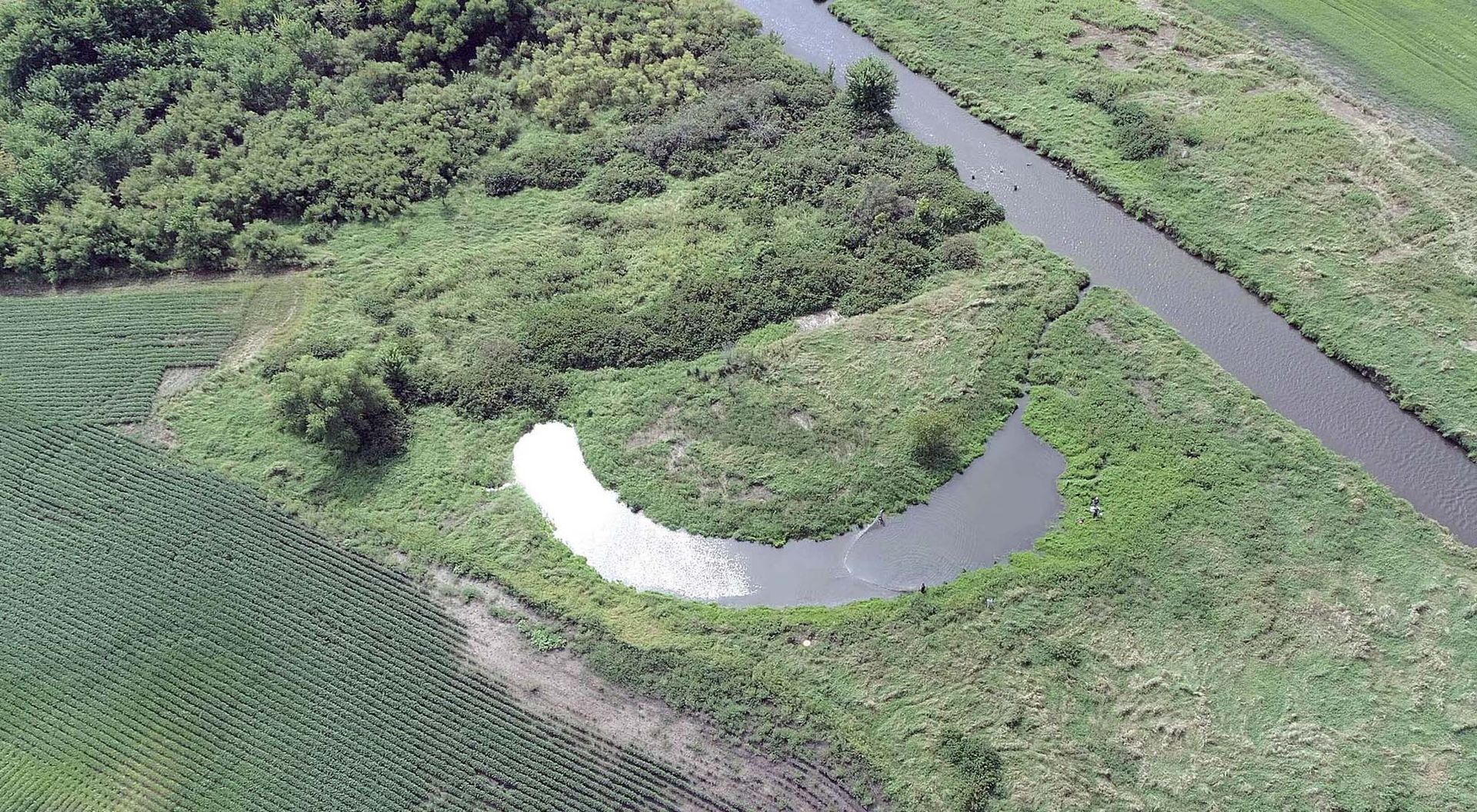
10 Oxbow Restoration
Oxbow wetlands are small wetlands that are restored from former meandering streams. They take the shape of an oxbow, or a shallow “U” shape. Often, there will be a u-shaped depression in the landscape next to the streams, which is the vestigial remains of the former meandering streams. These depressions can often be excavated, and tile outlets can be diverted to the excavated site to allow flow to the oxbow wetland before the water moves in the stream channel, filtering sediments and nutrients that run off-field. Oxbows provide many of the same ecosystem services to the environment that wetlands do, just at a smaller scale. They take far fewer acres out of production and the cost of construction is much less than a traditional wetland.
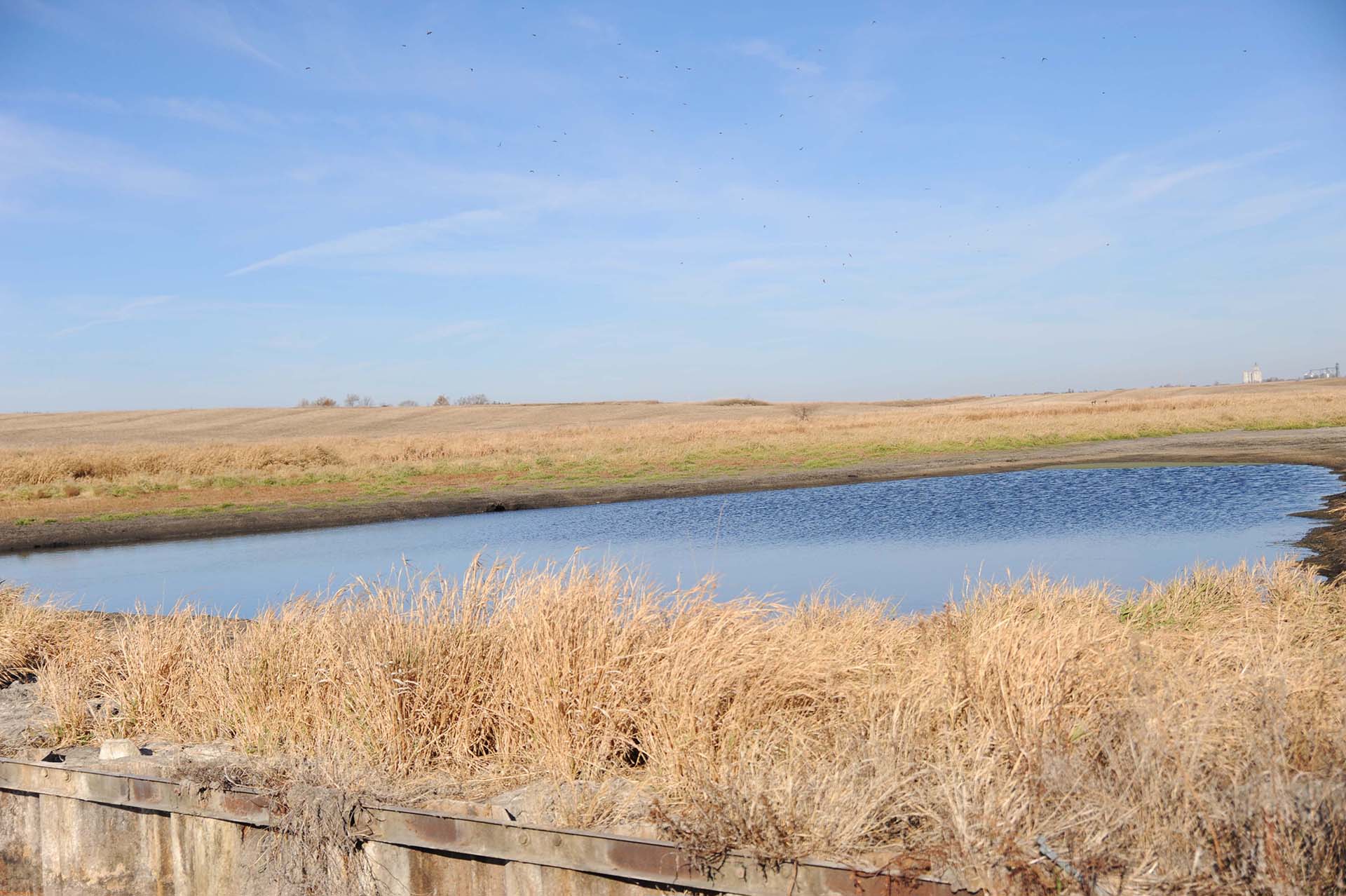
11 Wetlands
Wetlands are areas where water is slowed down, allowing nature to filter out nutrients from water runoff. They provide multiple ecosystem services such as downstream flood resiliency, nutrient and sediment capture, wildlife habitat, and recreational enjoyment. Historically, Iowa was the prairie pothole of the upper Midwest, meaning it was dotted with thousands of wetlands that slowed water moving through the Mississippi watershed and provided landscape-level filtration. However, with the advent of farming, wetlands were drained, and Iowa’s rich soils became the breadbasket of the United States. In draining our wetlands, we lost important ecosystem services that we now realize we need for improved downstream water quality. There are state, federal, and private funding options for wetlands. If you want a wetland in Iowa, you won’t have to pay for it. Let us help you find the right wetland program for you.
-
1 Improved Nutrient Management
ButtonOxbow wetlands are small wetlands that are restored from former meandering streams. They take the shape of an oxbow, or a shallow “U” shape. Often, there will be a u-shaped depression in the landscape next to the streams, which is the vestigial remains of the former meandering streams. These depressions can often be excavated, and tile outlets can be diverted to the excavated site to allow flow to the oxbow wetland before the water moves in the stream channel, filtering sediments and nutrients that run off-field. Oxbows provide many of the same ecosystem services to the environment that wetlands do, just at a smaller scale. They take far fewer acres out of production and the cost of construction is much less than a traditional wetland.
-
2 Improved Manure Management
ButtonSimilar to conserving and carefully managing synthetic nutrients, how you calculate and manage your manure applications can drastically improve the quality of water that moves off your fields, keeping more of those valuable organic nutrients where they are needed the most: in your fields for your cash crops to use!
Using Manure Management Plans, and manure stabilizers, are practices that reduce loss of manure and improve downstream water quality.
-
3 Vertical or ConservationTillage
ButtonSometimes referred to as “mulch tillage”, these types of reduced tillage practices leave at least one-third of the plant residue from each growing season on the surface of the soil after shallow incorporation of the rest. Leaving surface residue slows or prevents water and wind-related soil erosion, which directly improves our water quality and keeps our most valuable asset where it belongs: in our fields! There are a variety of implements that qualify as conservation tillage such as chisels, disks, or field cultivators. Vertical tillage is a more recent and popular practice that can leave up to 70 percent of the surface plant residue undisturbed.
-
4 Saturated Buffers and Bioreactors
ButtonAlso known as “edge of field’ structures, bioreactors and saturated buffers are specialized drainage management structures that are typically installed on the edge of fields, usually in connection with existing buffer or filter strips. Connected to tile outlets, these structures act as a filtration system for a field’s tile drainage system, predominately removing nitrates before they enter the waterways. Saturated buffers and bioreactors are part of a systems-approach to overall nutrient capture where in-field practices like cover crops, no-till, and nutrient management are combined with edge-of-field structures to significantly reduce nutrient runoff. However, for landowners or farmers who don’t want to use in-field practices, saturated buffers and bioreactors are options to capture nitrates at the edge of the fields before they are lost to downstream waterways. Where appropriate, edge of field structures are also attractive alternatives to wetlands, in that they usually don’t take additional acreage out of production.
-
5 Cover Crops
ButtonCover crops are one of the most popular conservation farming practices in the Midwest. These are crops that are planted in the fall to provide protective cover for the soil and to take in excess nutrients over the winter and into spring. Cover crops hold nutrients and soil in place until Spring, when they are terminated and allowed to decompose. Cover crops provide numerous soil health benefits including: increasing water infiltration, porosity, tilth, organic matter, and soil microorganisms. There are multiple species of cover crops for every agronomic purpose and our team can help you decide what species to choose based on your management plans.
-
6 Diversifying Crop Rotation
ButtonCrop rotation can contribute to conservation goals by adding one or more crops into the rotation and covering the soil for longer periods of time during the year. This contributes to improved soil health, reduced soil erosion, and better uptake of residual nutrients that are not used by the main cash crops. Relay cropping, double cropping, and pasture or hay are the most common types of crop diversification in Iowa. Relay cropping typically involves planting soybeans into an over wintering small grain crop that is then harvested a few weeks later. Double cropping typically involves planting soybeans immediately after harvesting an overwintering small grain. While these systems take a few years to master, their payoff can be large and enjoyable for the farmer who wants to grow something more than corn or soybeans.
-
7 No-till and Strip-till
ButtonNo-till and Strip-till are two types of conservation tillage practices that significantly reduce or eliminate tillage all together. No-till is exactly as it sounds, no tillage whatsoever. With the use of specialized drills and planters, the soil surface is left as undisturbed as possible. Strip till uses a designed implement to create a tilled and fertilized strip for ideal plant growth, while leaving the rest of the soil surface across the field undisturbed. Both systems reduce trips across the field, save money on fuel expenses, reduce or eliminate soil erosion, and improve organic matter percentage over time. No-till is attractive because it also saves on machinery and maintenance costs. Both systems are more reliant on chemical herbicides for weed management and require a more holistic management approach during the transition period away from tillage.
-
8 Buffer Strips, Waterways, and Filter Strips
ButtonBuffer strips, waterways, and filter strips are areas of permanent vegetation that are designed to slow or capture the movement of water off field before it reaches drainage ditches and creeks. These strips can be either introduced species (commonly brome grass) or native species and they are located between creeks or ditches and the neighboring cropland. These practices take acres out of production but provide numerous incredibly important ecosystem services. Perhaps the most valuable benefit is their ability to reduce soil erosion from water movement. They also provide wildlife and pollinator habitat and improve downstream water quality.
-
9 CRP or Wildlife Habitat
ButtonCRP refers to the Conservation Reserve Program, which is the most common practice to take farmable acres out of production and plant perennial native vegetation. It is commonly used on areas of marginal land due to excessive flooding, steep terrain, or other anti-quality factors that make farming difficult. There are dozens of different CRP programs designed to achieve certain goals, however, all tracts of perennial vegetation that are intentionally planted to focus on certain ecosystem goals are incredibly valuable for wildlife and water quality. These programs can also benefit a farm’s bottom line by raising a field’s overall return on investment when the poorest performing acres are taken out of production.
-
10 Oxbow Restoration
ButtonOxbow wetlands are small wetlands that are restored from former meandering streams. They take the shape of an oxbow, or a shallow “U” shape. Often, there will be a u-shaped depression in the landscape next to the streams, which is the vestigial remains of the former meandering streams. These depressions can often be excavated, and tile outlets can be diverted to the excavated site to allow flow to the oxbow wetland before the water moves in the stream channel, filtering sediments and nutrients that run off-field. Oxbows provide many of the same ecosystem services to the environment that wetlands do, just at a smaller scale. They take far fewer acres out of production and the cost of construction is much less than a traditional wetland.
-
11 Wetlands
ButtonWetlands are areas where water is slowed down, allowing nature to filter out nutrients from water runoff. They provide multiple ecosystem services such as downstream flood resiliency, nutrient and sediment capture, wildlife habitat, and recreational enjoyment. Historically, Iowa was the prairie pothole of the upper Midwest, meaning it was dotted with thousands of wetlands that slowed water moving through the Mississippi watershed and provided landscape-level filtration. However, with the advent of farming, wetlands were drained, and Iowa’s rich soils became the breadbasket of the United States. In draining our wetlands, we lost important ecosystem services that we now realize we need for improved downstream water quality. There are state, federal, and private funding options for wetlands. If you want a wetland in Iowa, you won’t have to pay for it. Let us help you find the right wetland program for you.
Cover Crops for Water Conservation
Learn about the partnership effort between Heartland Co-op, Polk County, the City of Des Moines, and Des Moines Water Works to highlight the importance of cover crops for water conservation and water quality.
GET IN TOUCH
Heartland Co-op
2829 Westown Pkwy.
Suite 350
West Des Moines, IA 50266
Phone: [515] 974 - 4516
